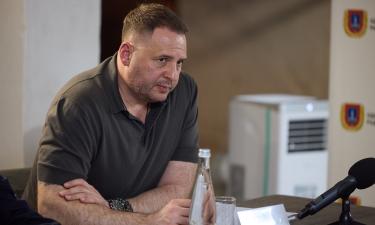Mini IVF, cheaper artificial insemination arrives in the country
 A new fertilization technique uses less medication and stimulates fewer eggs. The technique uses fewer drugs to reduce costs by up to 40% for the treatment.
A new fertilization technique uses less medication and stimulates fewer eggs. The technique uses fewer drugs to reduce costs by up to 40% for the treatment.
by Fernanda Aranda, IG Sao Paulo
The wish to be a mother and difficulty becoming pregnant do not choose social class. According to data published in the latest issue of the American Journal of Human Reproduction, one in seven couples has fertility problems and, in some cases, assisted reproduction appears the only way to realize the dream of conception.
The high cost of the procedure - between $15,000 and $30,000 - hinders access to the majority of the population. As a direct consequence, the technique came to be seen as "elitist" and public clinics that offer it (there are only four in the entire country) have waiting lines of more than three years due to high demand from patients.
Five years ago, experts estimate, reproductive medicine went looking for a way to attract a greater number of customers and to democratize access to the technology. Among the strategies was born the "Mini Vitro Fertilization (Mini IVF), developed by a Japanese doctor, Osmau Kato, who can now be found in some private clinics in Brazil.
Democratization
According Schizzi Arnold, a specialist in human reproduction, the Paulista Institute of Gynecology and Obstetrics (IPGO), IVF is no longer in use. Now the world uses many medicines to produce a very large number of eggs and thus increase the chance of fertilization.
"But international experience has shown that of each 10 eggs produced after stimulation, only the first three possess the needed quality and can be safely used in fertilization," he says.
"It became apparent that we could use fewer drugs to stimulate a smaller number of ova and also get a procedure up to 40% cheaper and as efficient as the old one, with the advantage of lower exposure to drugs. Last year, this technique has was baptized the Mini IVF and is already offered in many places," he adds.
The specialist, however, warned: it's not just the pockets of interested persons who must be screened prior to the procedure. "Each case is unique. We evaluate the patient's age, if there is any disease associated with difficulty in getting pregnant and the Mini IVF might not always may be an option," he says. All these factors affect the price of treatment.
"But now we have the possibility for people with more modest economic conditions to bear the costs of treatment, before a mission impossible."
Also it is with the strategy to sell at a loss the values of medicines used in the process of artificial fertilization that the specialist Luiz Gonza'les created VidaLink, a program that joins 99 clinics, in 34 Brazilian cities, with the intention to democratize assisted reproduction.
According to him, couples with limited economic conditions receive discounts of up to 50% on the medication used in treatment. If they choose to do the treatment at an accredited clinic, they are promised that health care costs can be negotiated up to 40% lower. They need to register and wait for the joining of the participating clinics. Assessing the costs, a procedure that would have cost $30,000, ends up costing U.S. $18,000. "One of the benefits of our work is really social inclusion," says Gonzales.
Also it is with the strategy of cutting the price of the medicines used in the process of the artificial fertilization that the specialist, Luiz Gonzáles, created VidaLink, planning to join 99 clinics, in 34 Brazilian cities with the intention of democratizing assisted reproduction.
Safeguards
The popularization of in vitro fertilization, created 32 years ago, can be measured by statistics of the Latin American Network of Assisted Reproduction, which gathers information from production of the main clinics in Brazil, Argentina, Uruguay, Paraguay, Chile and Ecuador.
In ten years - between 1998 and 2008 - the total inseminations and fertilizations performed grew 65.4%, from 12,274 to 35,496 procedures.
The caveat of the experts is that even though costs are more accessible, the number of clinics that offer the technique has increased and the techniques are more advanced. In-vitro fertilization and Mini IVF remain as the last option on the scale of contraception.
In most cases, health problems such as varicocele - for men - and endometriosis (female problem) are the causes of difficulty in conceiving and they ask for other medical procedures as a solution rather than no fertilization. Another point mentioned above by Sandro Esteves, a doctor specialized in assisted reproduction, is that there has not been a sufficient body of people produced through fertilization in order to demonstrate the real effects of technology on the health of babies in the long run.
Translated from the Portuguese version by:
Lisa Karpova
Pravda.Ru
Subscribe to Pravda.Ru Telegram channel, Facebook, RSS!




